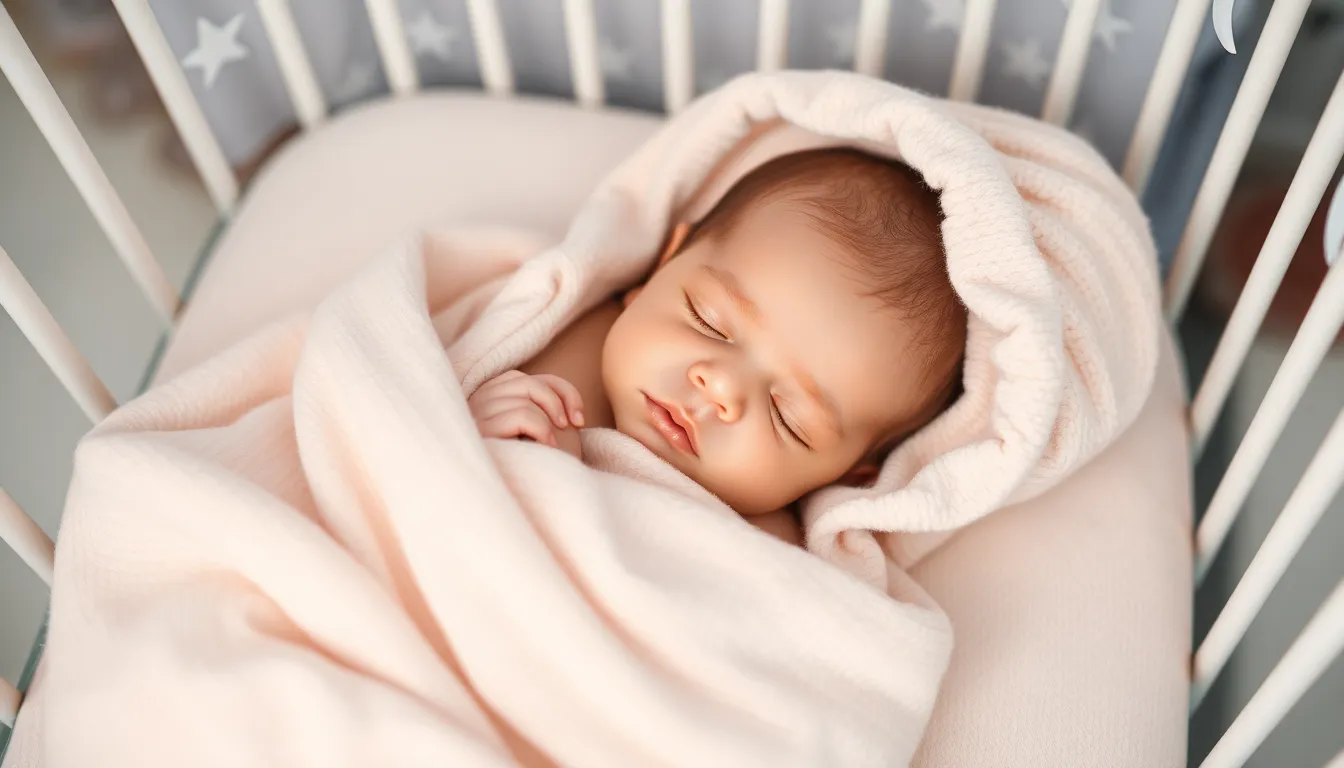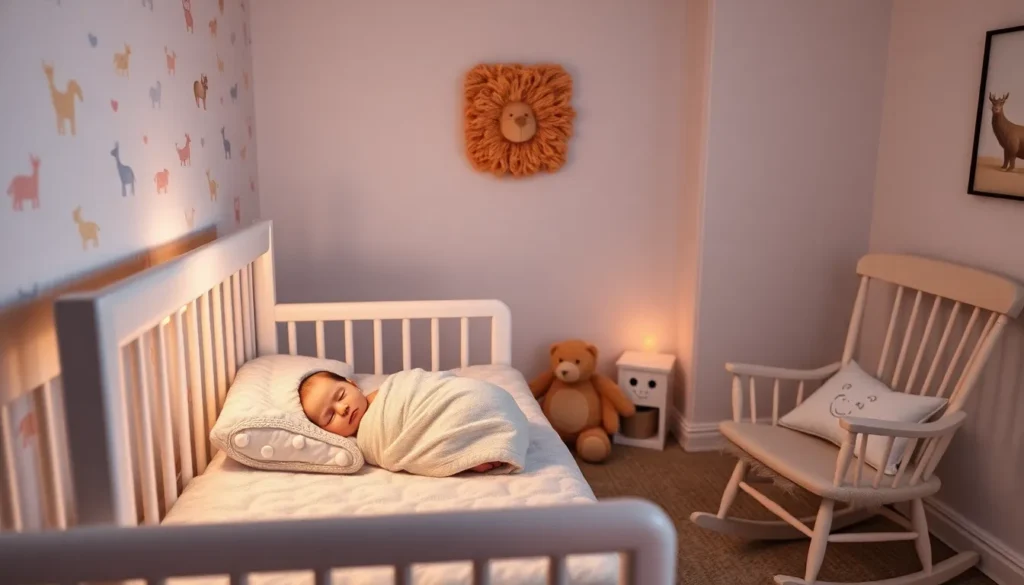Table of Contents
ToggleUnderstanding a baby’s sleep cycle is essential for new parents navigating the challenges of infant care. Babies have unique sleep patterns that differ significantly from adults, leading to confusion and concern for many families. Recognizing these cycles can help parents foster better sleep habits and create a more harmonious nighttime routine.
From the brief periods of REM sleep to the longer stretches of deep sleep, each stage plays a crucial role in a baby’s development. By learning how these cycles work, parents can support their little ones in achieving restful sleep, ultimately benefiting the entire household. Armed with this knowledge, caregivers can feel more confident in their approach to nurturing their baby’s sleep needs.
Understanding Baby Sleep Cycle
Understanding a baby’s sleep cycle reveals essential insights into their sleep habits. Babies experience distinct sleep patterns that differ significantly from those of adults.
What Is a Baby Sleep Cycle?
A baby sleep cycle typically lasts about 50 to 60 minutes. Each cycle includes various stages: light sleep, deep sleep, and REM (rapid eye movement) sleep. Light sleep occurs first, where babies show signs of movement and may make noises. Next, deep sleep features minimal movement, crucial for growth and development. Finally, REM sleep involves active dreaming and brain activity, aiding in cognitive development. Babies transition between these stages multiple times during the night, often waking briefly before resuming sleep.
Importance of Baby Sleep Cycle
Recognizing the baby sleep cycle plays a vital role in promoting healthy sleep habits. Each stage impacts physical and cognitive development. Light sleep helps babies transition into deeper sleep, while REM sleep contributes to brain development and emotional processing. A consistent sleep cycle fosters a sense of security and routine, which can lead to improved mood and behavior during waking hours. By understanding these cycles, caregivers can create an optimal sleep environment and respond appropriately to the baby’s sleep needs, leading to better overall family wellness.
Stages of Baby Sleep

Understanding the stages of baby sleep helps parents recognize the different phases an infant experiences throughout the night. The two primary stages are Active Sleep and Quiet Sleep.
Active Sleep
Active Sleep occurs early in the sleep cycle and lasts for about 20 to 25 minutes. During this stage, babies exhibit movements like twitching, jerking, or even smiling. Breathing may become irregular, and rapid eye movements (REM) occur, indicative of dreaming. Active Sleep plays a significant role in brain development, promoting cognitive growth as neural connections form. It’s common for babies to make sounds or cry during this phase, which prompts caregivers to monitor their comfort and needs.
Quiet Sleep
Quiet Sleep follows Active Sleep and can last from 30 to 40 minutes. This stage features minimal movement and deeper breathing patterns. Babies appear restful, as their bodies engage in crucial restorative processes, including tissue growth and physical recovery. During Quiet Sleep, the production of growth hormones increases, contributing to an infant’s overall development. This stage is vital for establishing a solid sleep foundation, allowing babies to recharge and prepare for waking periods.
Factors Affecting Baby Sleep Cycle
Several key factors influence a baby’s sleep cycle, impacting both the quality and duration of sleep. These factors include age and development, as well as environmental conditions.
Age and Development
Age significantly influences a baby’s sleep cycle. Newborns typically sleep 14 to 17 hours a day, with shorter sleep cycles of about 50 minutes. As babies grow, their sleep patterns evolve. By 3 to 6 months, infants usually develop longer sleep cycles and may sleep for 12 to 15 hours daily. Milestones, like teething or learning to crawl, can disrupt sleep, leading to more frequent awakenings. Cognitive development also plays a role; as babies progress through various developmental stages, changes in sleep duration and depth occur. Recognizing these shifts helps caregivers adapt sleep routines to better align with their baby’s changing needs.
Environmental Factors
Environmental factors shape a baby’s sleep cycle significantly. Noise levels, room temperature, and light exposure directly affect sleep quality. A quiet, dark, and comfortable room promotes better sleep. Ideal room temperatures range from 68°F to 72°F (20°C to 22°C) for optimal comfort. Ambient noise, such as gentle white noise, can help mask disruptive sounds. Bedding and sleep surfaces must also meet safety standards to prevent discomfort or hazards during sleep. By controlling these environmental factors, parents can enhance their baby’s sleep experience and foster a more restful cycle.
Tips for Enhancing Baby Sleep Cycle
Enhancing a baby’s sleep cycle involves establishing consistent routines and creating an optimal sleeping environment. These strategies contribute significantly to improved sleep quality and duration.
Establishing a Routine
Establishing a consistent sleep routine fosters predictability and security. Parents can implement the following practices:
- Set a bedtime: Choose a specific bedtime that aligns with the baby’s natural sleep signals, promoting easier transitions to sleep.
- Follow a pre-sleep ritual: Introduce calming activities such as bathing, reading, or gentle rocking to signal that it’s time to wind down.
- Maintain consistency: Adhere to the same sleep schedule for both naps and nighttime sleep, reinforcing biological rhythms.
Routines enhance a baby’s ability to self-soothe and fall asleep independently, further establishing healthy sleep patterns.
Creating a Sleep-Friendly Environment
Creating a conducive sleep environment nurtures a baby’s ability to rest soundly. Key elements include:
- Control light exposure: Use blackout curtains to block out light and create a dark room, essential for promoting deeper sleep.
- Manage noise levels: Utilize white noise machines to mask disruptive sounds and create a soothing auditory backdrop.
- Adjust room temperature: Maintain an ideal temperature between 68°F and 72°F (20°C and 22°C), as it directly impacts sleep comfort.
By optimizing these environmental factors, parents can enhance the overall sleep experience, promoting longer, more restorative sleep periods.
Understanding a baby’s sleep cycle is essential for promoting healthy sleep habits and overall well-being. By recognizing the distinct stages of sleep and their impacts on development, parents can create an optimal sleep environment that caters to their baby’s needs. Consistency in routines and adjustments to the sleeping space can significantly enhance sleep quality. This knowledge not only benefits the baby but also contributes to a more harmonious family dynamic. With the right approach, parents can navigate the challenges of infant sleep and foster restful nights for everyone involved.







